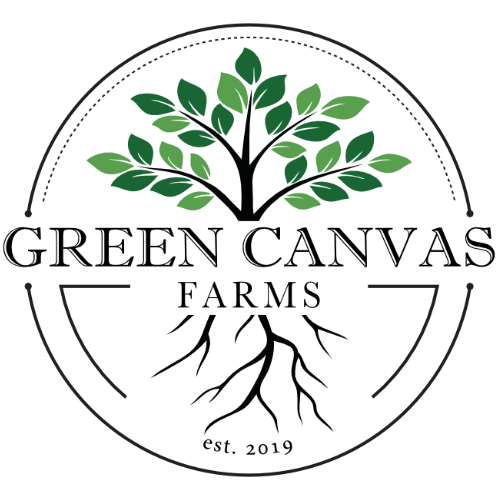
Caucasus x Appalachia | SERIES INTRO
Share
I spent 3 weeks in the Republic of Georgia back in 2019 for an ethnobotanical exchange project. I experienced country life in a small village outside the city of Kutaisi (Imereti region). There I learned so much about Georgian history, cuisine, and the plants/fungi used for food and medicine. It’s 2024 now, and I still reference my field journal, photos, audio recordings, and research. I always thought I’d make some mini doc with all that collected information, but life gets busy as you know. So I’ll just put it all here for now. For every summer season that passes I’m called back to Georgia. I toggle between the Appalachians and the Caucasus in my mind’s eye while I harvest mulberries, purslane, walnuts, greenbriers, wild grapes (muscadines), and so many other shared plant genera.


That comparative analysis of the southern Appalachians (where I live) and the lower Caucasus keeps my mind turning. I had never expected Georgia to feel so familiar, but there I was observing and marveling at plants that grew in my own oak-chestnut forests and field edges - things like dandelions, greenbriers, geraniums, sorrels, elderberries, nettles, mullein, and so many others. Granted, some of the species were different, like a Caucasian rhododendron instead of a North American rhododendron, or a Persian walnut instead of an American black walnut. Nevertheless, species of the same genera usually share the same traits, and so I’ve been immensely intrigued with how our respective cultures use these plant relatives in similar and dissimilar ways ever since. Take for instance the Georgian greenbrier, Smilax excelsa. In Georgia it is called ekala. Ekala is a fairly common wild-harvested food in Georgia. In my part of the world we also have greenbrier (there are some 20 Smilax species endemic to North America), but nobody I know touches the stuff unless to eradicate it. Elderberry by comparison is used similarly by both cultures - for medicine and flavoring.



I’ll share a lot of what I learned in upcoming posts. It’ll give me the chance to deep dive on individual plants and topics. And I hope my fellow plant nerds will find it all as intriguing as I do! There’s an itch I need to scratch when it comes to comparing my home region and the Caucasus. I won’t be able to cover every genera in separate posts, so I’ve compiled a working list below. These are plant groups that have some significance as food and/or medicine and can be found in both the Caucasus and the Appalachians. This is not a comprehensive list, and I’m sure I’ll add to this list in future. But these are the plants I’m familiarized with - both here at home and during my time in Georgia.
| PLANTS (food/medicine) |
CAUCASUS Nat = native |
APPALACHIANS Int = introduced |
| Barberry | Berberis vulgaris (nat) | Berberis canadensis (nat), Berberis vulgaris (int) |
| Beech | Fagus orientalis (nat) | Fagus grandifolia (nat) |
| Bladdernut | Staphylea colchica (nat) | Staphylea trifolia (nat) |
| Chicory | Cichorium intybus (nat) | Cichorium intybus (int) |
| Comfrey |
Symphytum caucasicum (nat) |
Symphytum officinale (int) |
| Dandelion | Taraxacum officinale (nat) | Taraxacum officinale (int) |
| Dock (Sorrel) | Rumex spp. (nat) | Rumex spp. (nat/int) |
| Dogwood | Cornus mas (nat) | Cornus florida (nat) |
| Elder | Sambucus ebulus (nat), Sambucus nigra (nat) | Sambucus canadensis (nat) |
| Eleagnus | Eleagnus multiflora (int?) | Eleagnus pungens (int) |
| Garlic, Wild | Allium ursinum (nat), Allium victorialis (nat) | Allium tricoccum (nat) |
| Grape, Wild | Vitis vinifera (nat) | Vitis rotundifolia (nat) |
| Greenbrier | Smilax excelsa (nat) | Smilax spp. (nat) |
| Linden | Tilia begoniifolia (nat) | Tilia americana (nat) |
| Mallow | Malva neglecta (nat), Malva slyvestris (nat) | Malva neglecta (int) |
| Mint | Mentha pulegium (nat) + more spp. | Mentha spp. (int), Pycnanthemum spp. (nat) |
| Mulberry | Morus alba (int), Morus nigra (int?) | Morus alba (int), Morus rubra (nat) |
| Mullein | Verbascum thapsus (nat) | Verbascum thapsus (int) |
| Nettle | Urtica dioica (nat) | Urtica dioica (int) |
| Oak | Quercus iberica (nat) | Quercus spp. (nat) |
| Persimmon | Diospyros lotus (nat) | Diospyros virginiana (nat) |
| Plum, Wild | Prunus divaricata (nat), Prunus domestica (nat), Prunus vachuschtii (nat) + more spp. | Prunus alleghaniensis (nat), Prunus americana (nat) + more spp. |
| Pokeweed | Phytolacca americana (int) | Phytolacca americana (nat) |
| Purslane | Portulaca oleracea (nat) | Portulaca oleracea (int) |
| Redbud | Cercis canadensis (int), Cercis siliquastrum (int) | Cercis canadensis (nat) |
| Rose, Wild | Rosa canina (nat) + more spp. | Rosa canina (int) + more spp. |
| Solomon's Seal | Polygonatum glaberrimum (nat) | Polygonatum biflorum (nat) |
| Trifoliate Orange | Poncirus trifoliata (int) | Poncirus trifoliata (int) |
| Vaccinium | Vaccinium arcotostaphylos (nat) | Vaccinium pallidum (nat) + more spp. |
| Walnut | Juglans regia (nat) | Juglans nigra (nat) |
